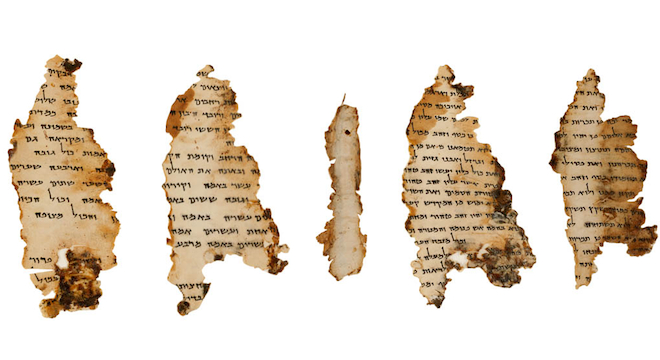There is no doubt that Google is shaping our future, but it is also doing its part to preserve the ancient past, creating searchable digital copies of The Dead Sea Scrolls using high-resolution photographs taken by a celebrated anitquities photographer.
To be more specific, Google has digitzed – or made digital copies of – five of the most-complete scrolls, allowing Web users to see them up close in extreme detail (1,200 megapixels), and to search for specific passages in English and Hebrew. The digitized copies of The Great Isaiah Scroll, The Temple Scroll, The Community Rule Scroll and The Commentary on The Habakkuk Scroll are available online at The Israel Museum in Jerusalem’s website.
“Now, anyone around the world can view, read and interact with five digitized Dead Sea Scrolls,” Google wrote in a blog post announcing the accomplishment.
The copies were posted on Monday, ahead of Rosh Hashanah, Jewish New Year, which begins Wednesday at sunset. The total reported cost was $3.5 million using new high resolution photographs snapped over a sixth-month period by antiquities photographer Ardon Bar-Hama, whose resume includes photographing in high-res the Codex Vaticanus, a 4th-century copy of the Christian Bible.
The entire enterprise was enormously labor intensive. As Bar-Hama explained to TPM Idea Lab via email:
“[There was] one photo for each column of a scroll (Isaiah has about 54 columns, Temple 67, others are shorter – you can check on line and count). Of course I took many more [photos] than one shot for each but only one was selected. Many shoots were stitched together to produce one huge seamless image”
As for Bar-Hama’s trusty camera equipment, he told Idea Lab he used an Alpa 12 Max camera with a Leaf Aptus digital back. He used one-shot digital photography as opposed to scanning, but said that the lighting and setup took the most time.
Bar-Hama also said that of all the projects he has done, which are “some of the most exciting projects,” he could think of, the Dead Sea Scrolls “is by far the best. Not only because of its importance” to scholarly and religious history, but because he is an Orthodox Jew living in Israel.
Previous photographs of the Dead Sea Scrolls have been posted online, including by the The Dead Sea Scrolls Foundation, but never in this amount of detail or with such extensive search functions.
“The combination of the digital back, camera and lenses used together with the artistry of lighting has never been done before to my knowledge,” said Bar-Hama.
The five digital scrolls posted online Monday are just of the total haul of documents: Over 950 manuscripts that were found in 1947 by Beoduins in caves near the West Bank archeological site Khirbet Qumran.
Last October, Google launched a separate but related project to digitize the Israeli Antiquities Authorities entire 30,000-fragment collection of Dead Sea Scrolls. That’s expect to take until 2016, according to The Associated Press.
Watch the following video from the Israel Museum in Jerusalem on the









